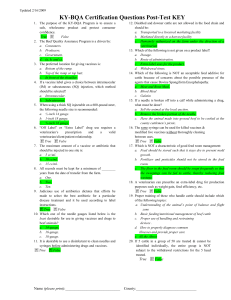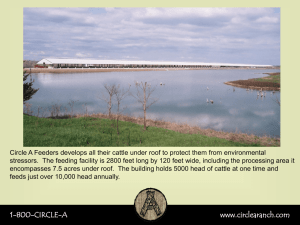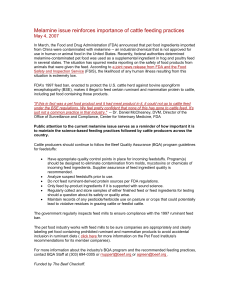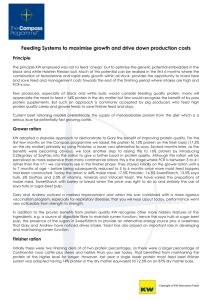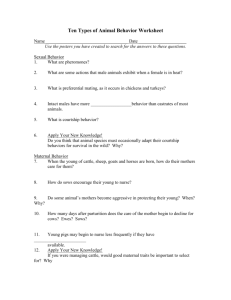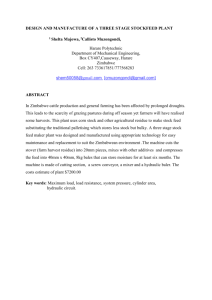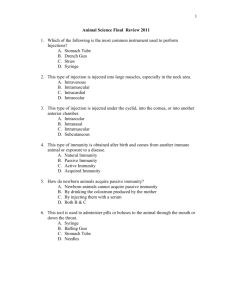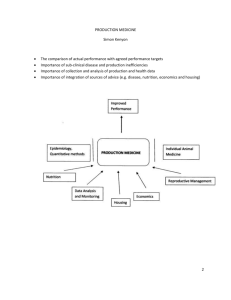Low Cost Beef Unit Construction on Furzehill Farm
advertisement
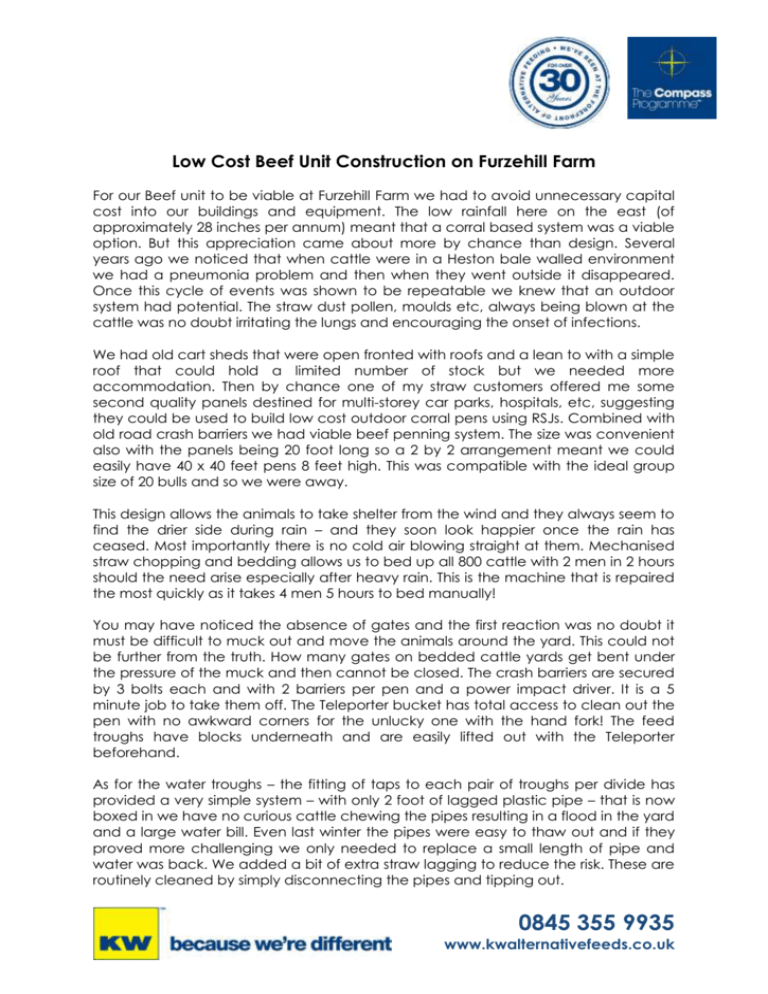
Low Cost Beef Unit Construction on Furzehill Farm For our Beef unit to be viable at Furzehill Farm we had to avoid unnecessary capital cost into our buildings and equipment. The low rainfall here on the east (of approximately 28 inches per annum) meant that a corral based system was a viable option. But this appreciation came about more by chance than design. Several years ago we noticed that when cattle were in a Heston bale walled environment we had a pneumonia problem and then when they went outside it disappeared. Once this cycle of events was shown to be repeatable we knew that an outdoor system had potential. The straw dust pollen, moulds etc, always being blown at the cattle was no doubt irritating the lungs and encouraging the onset of infections. We had old cart sheds that were open fronted with roofs and a lean to with a simple roof that could hold a limited number of stock but we needed more accommodation. Then by chance one of my straw customers offered me some second quality panels destined for multi-storey car parks, hospitals, etc, suggesting they could be used to build low cost outdoor corral pens using RSJs. Combined with old road crash barriers we had viable beef penning system. The size was convenient also with the panels being 20 foot long so a 2 by 2 arrangement meant we could easily have 40 x 40 feet pens 8 feet high. This was compatible with the ideal group size of 20 bulls and so we were away. This design allows the animals to take shelter from the wind and they always seem to find the drier side during rain – and they soon look happier once the rain has ceased. Most importantly there is no cold air blowing straight at them. Mechanised straw chopping and bedding allows us to bed up all 800 cattle with 2 men in 2 hours should the need arise especially after heavy rain. This is the machine that is repaired the most quickly as it takes 4 men 5 hours to bed manually! You may have noticed the absence of gates and the first reaction was no doubt it must be difficult to muck out and move the animals around the yard. This could not be further from the truth. How many gates on bedded cattle yards get bent under the pressure of the muck and then cannot be closed. The crash barriers are secured by 3 bolts each and with 2 barriers per pen and a power impact driver. It is a 5 minute job to take them off. The Teleporter bucket has total access to clean out the pen with no awkward corners for the unlucky one with the hand fork! The feed troughs have blocks underneath and are easily lifted out with the Teleporter beforehand. As for the water troughs – the fitting of taps to each pair of troughs per divide has provided a very simple system – with only 2 foot of lagged plastic pipe – that is now boxed in we have no curious cattle chewing the pipes resulting in a flood in the yard and a large water bill. Even last winter the pipes were easy to thaw out and if they proved more challenging we only needed to replace a small length of pipe and water was back. We added a bit of extra straw lagging to reduce the risk. These are routinely cleaned by simply disconnecting the pipes and tipping out. 0845 355 9935 www.kwalternativefeeds.co.uk The troughs were all made on the farm. The meal trough had to be water tight to preserve the feed quality but the opening accommodates the width of the Teleporter bucket for quick filling. We take the feed to the cattle in the bucket rather than using the wagon to discharge the feed – this fits better into our system and minimises waste. We recognised the benefit of the moist feed and found ourselves in a race to produce sufficient moist feed hoppers to capitalise on the feed saving as the dry meal troughs were not suitable. They have a concrete base that appears to keep the mix cool stopping it going off. Despite not been galvanised these have lasted well, some have been in use for 6 years with no sign of needing replacing. Concrete is probably the largest investment – we have laid a lot in recent years and will continue to do so as we feel it allows us to clean the passageways to the pens and control diseases. All pens have been set with the ultimate goal of a fully concreted yard while maintaining drainage and access. The feed store sometimes becomes a machinery store but will ultimately be a dedicated building. It is vital we have the space to take advantage of the feed material opportunities, be able to rotate bunkers allowing old stocks to be used first and store a week’s supply of the grower mix and a premix of the dry ingredients of the finisher mix. Storing moist feeds such as the potato co-product Supastarch also needs proper 3walled storage and so we have recently adapted a pen using the panels to build concrete floored storage area sufficient to hold the current batch and new deliveries to ensure rotation. Our culture is to spend when you can on items that give a good return in the short and the long term and not to cut corners. We will continue to lay more concrete and build more pens as and when until we reach the optimum cattle numbers to staff ratio – where is our field boundary? 0845 355 9935 www.kwalternativefeeds.co.uk


